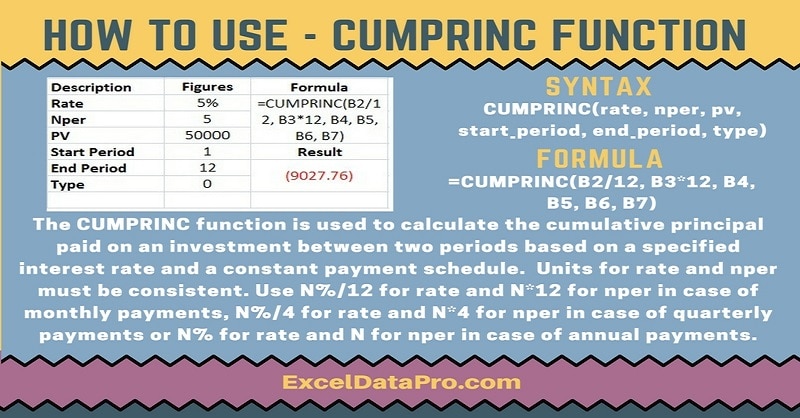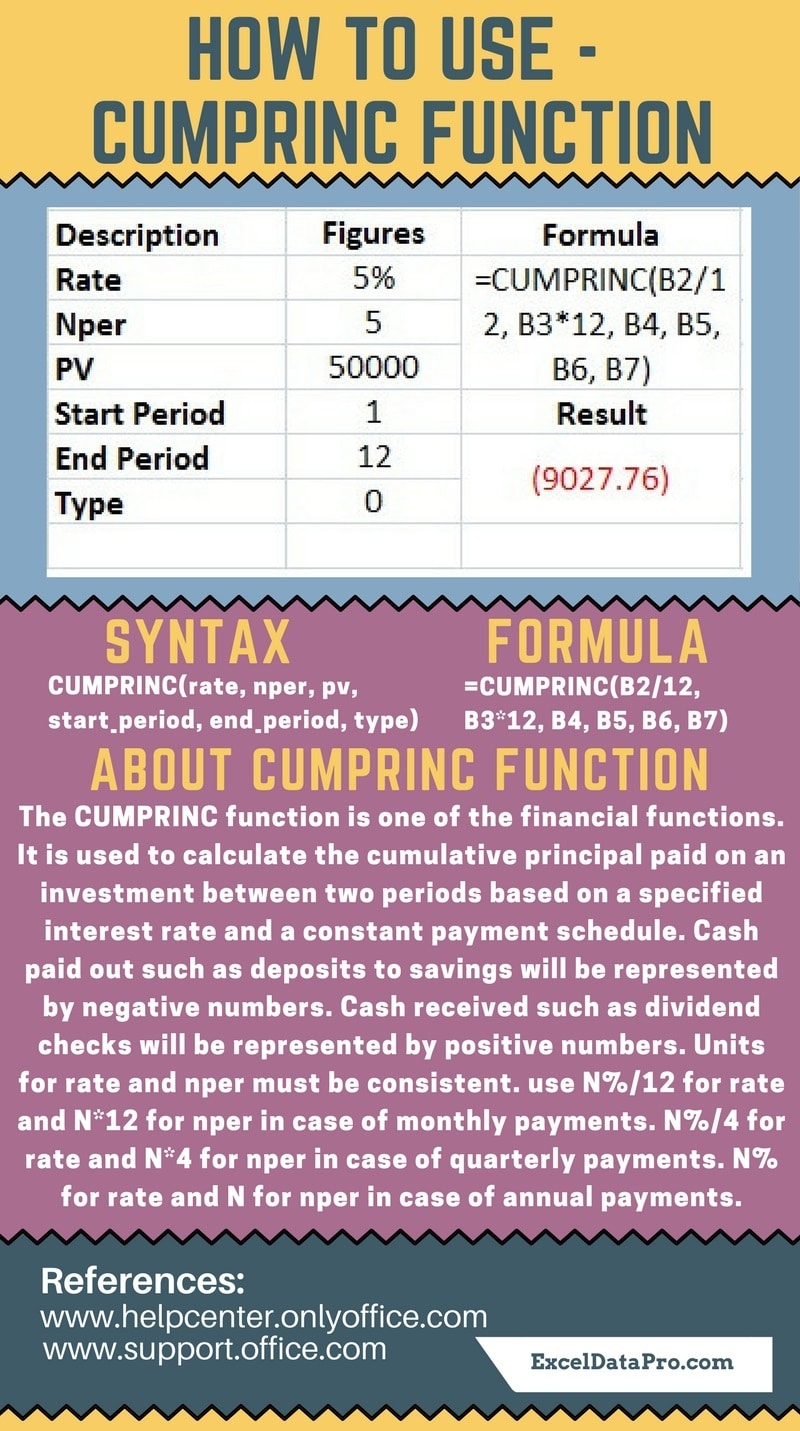
CUMPRINC function calculates the cumulative payment on the principal of a loan or investment, between two specified periods.
It is used to calculate the cumulative principal paid on an investment between two periods based on a specified interest rate and a constant payment schedule.
The CUMPRINC function is an inbuilt function in Excel. It is in the category of Financial Functions.
It is used as a worksheet function. You can enter the CUMPRINC Function as part of a formula in a cell of a worksheet.
Syntax for CUMPRINC Function
=CUMPRINC(rate, nper, pv, start_period, end_period, type)
Arguments
Rate: Required. The interest rate.
Nper: Required. The total number of payment periods.
Pv: Required. The present value.
Start_period: Required. The first period in the calculation. Payment periods are numbered beginning with 1.
End_period: Required. The last period in the calculation.
Type: Required. The timing of the payment. Where 0 is payment at the end of the period and 1 is payment at the beginning of the period.
Cash paid out such as deposits to savings is represented by negative numbers. Cash received such as dividend checks is represented by positive numbers.
Units for rate and nper must be consistent. Use N%/12 for rate and N*12 for nper in the case of monthly payments, N%/4 for rate and N*4 for nper in the case of quarterly payments, N% for rate and N for nper in the case of annual payments.
We have created the infographics for the CUMPRINC Function. With the help of these infographics, you can easily learn step by step process for using this excel functions.
Furthermore, Excel consists of many inbuilt functions which are helpful in the analytical and statistical study of number.
Simply follow the instructions in the infographics below:

Errors
#NUM! error occurs for following reasons:
1. The supplied start_period or end_period is ≤0 or is > nper.
2. The supplied start_period > end_period.
3. Any of the supplied rates, nper or pv arguments are ≤ 0.
4. The supplied type argument is not equal to 0 or 1.
#VALUE! error occurs when any of the supplied arguments are not recognized as numeric values.
Generally, while calculating monthly or quarterly payments, many users forget to convert annual interest rates or the number of periods to months or quarters.
Thus, to solve this problem you must ensure that the rate and the nper arguments are expressed in the correct units.
To learn other function like ACCRINT, AMORLINC and ZTEST Functions, please click on the name of the function.
Additionally, you can download other accounting templates like Break Even Analysis Template, Salary Sheet Template and Invoice with GST Template from here.
We thank our readers for liking, sharing and following us on different social media platforms.
If you have any queries please share in the comment section below. I will be more than happy to assist you.
Leave a Reply